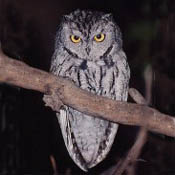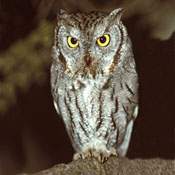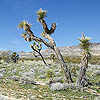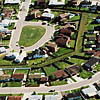Western Screech-Owl
Megascops kennicottii

Owls

Length: 8 in. (22 cm )
This small owl is confined to open woodland areas, riparian forest and occasionally saguaro cactus deserts. The nest is in a cavity of a tree, saguaro, telephone pole or occasionally in the eaves of a building. Activity is confined to the night time, and the daylight hours are spent in roosting cavities. Food varies from insects, frogs, small mammals and lizards to rarely fish.
The four-digit banding code is WESO.
Bibliographic details:
- Article: Western Screech-Owl
- Author(s): Dr. Biology
- Publisher: Arizona State University School of Life Sciences Ask A Biologist
- Site name: ASU - Ask A Biologist
- Date published:
- Date accessed:
- Link: https://askabiologist.asu.edu/activities/bird/western-screech-owl
APA Style
Dr. Biology. (). Western Screech-Owl. ASU - Ask A Biologist. Retrieved from https://askabiologist.asu.edu/activities/bird/western-screech-owl
Chicago Manual of Style
Dr. Biology. "Western Screech-Owl". ASU - Ask A Biologist. . https://askabiologist.asu.edu/activities/bird/western-screech-owl
Dr. Biology. "Western Screech-Owl". ASU - Ask A Biologist. . ASU - Ask A Biologist, Web. https://askabiologist.asu.edu/activities/bird/western-screech-owl
MLA 2017 Style
Be Part of
Ask A Biologist
By volunteering, or simply sending us feedback on the site. Scientists, teachers, writers, illustrators, and translators are all important to the program. If you are interested in helping with the website we have a Volunteers page to get the process started.








